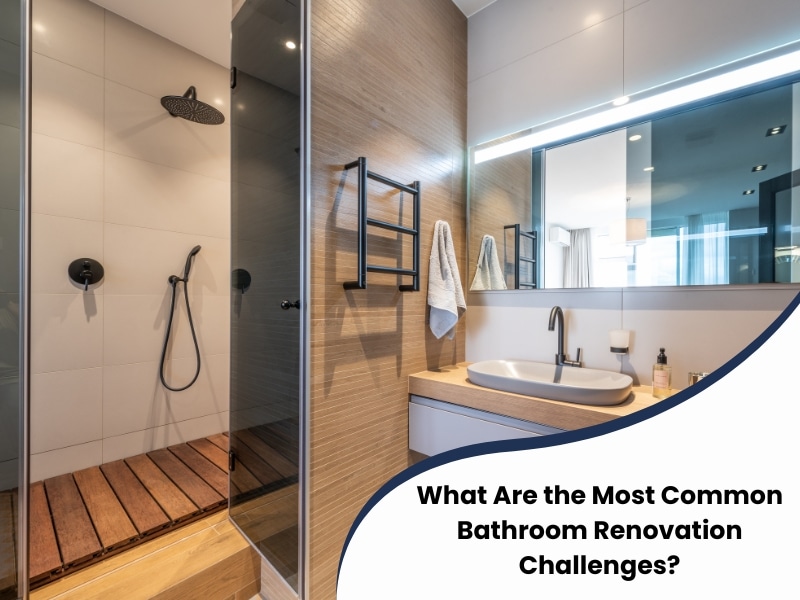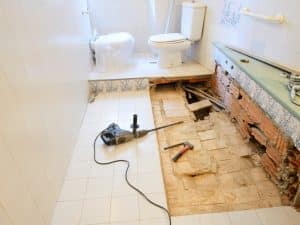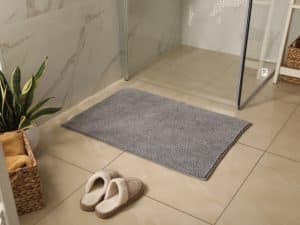Renovating your bathroom is an exciting project, transforming the space into a functional and stylish area. However, it comes with potential challenges. Many homeowners, caught up in the excitement, face common challenges that lead to costly issues. From poor planning to rushed decisions, several factors can affect the success of your renovation. By understanding these challenges, you can avoid costly errors and ensure a smoother process. This article explores frequent bathroom renovation challenges and offers tips to help you create a space you’ll love for years.
Why is it crucial to plan your bathroom renovation properly?
Proper planning is essential for a successful bathroom renovation. It ensures the project stays on budget, meets your needs, and avoids issues, turning your design ideas into a smooth, functional reality.
Here’s why planning is so important:
- Budgeting: Helps avoid overspending by setting a clear financial plan.
- Timeline: Establishing a renovation schedule ensures the project is completed on time.
- Design Clarity: Ensures the design meets your space, style, and functionality needs.
- Avoiding Delays: Anticipating potential challenges will help keep your project on track.
- Minimising Errors: Planning helps identify challenges early before they become bigger problems.
Proper planning is the blueprint for your renovation’s success. It sets you up for smoother execution and a more satisfying outcome.
How can poor planning affect your bathroom renovation?
Poor planning can lead to various challenges in your bathroom renovation, potentially wasting time, money, and effort. Below is a concise overview of how inadequate planning can negatively affect the project.
Impact of poor planning | Description |
Cost overruns | The budget can be exceeded due to overlooked costs. |
Design flaws | The design may not fit your space or meet functional needs. |
Unforeseen issues | Plumbing or electrical issues may cause delays. |
Inconsistent style | Lack of coordination leads to a disjointed aesthetic. |
Unsatisfactory results | Failure to plan may result in a space that doesn’t meet expectations. |
Proper planning is essential to overcome these challenges, ensuring your project stays on track and within budget.
What are the most frequent bathroom renovation challenges?
When it comes to bathroom renovations, homeowners face several common challenges, often due to a lack of experience or rushing into decisions without considering the consequences. Below are some of the most frequent challenges:
Common mistakes to avoid:
- Underestimating the budget: It’s easy to overlook hidden costs such as permits, unexpected repairs, or labour costs.
- Choosing the wrong materials: Opting for materials unsuited to the bathroom environment can lead to damage over time.
- Ignoring proper lighting: Bathroom lighting is crucial for functionality and aesthetics, and poor lighting can make the space feel cramped.
- Neglecting airflow: Inadequate ventilation may lead to condensation, which can cause mould and mildew problems.
- DIY difficulties: Attempting complex tasks, like plumbing or tiling, without professional help can result in costly repairs.
By avoiding these bathroom renovation mistakes, you can ensure your bathroom renovation is smooth and successful, saving you time and money in the long run.
How can poor waterproofing lead to long-term damage?
Waterproofing is crucial in bathroom renovations. Without it, your home faces mould, mildew, and rotting timber risks. Many homeowners cut corners, rushing or saving money, which leads to poor waterproofing and long-term damage.
Consequences of inadequate waterproofing:
- Mould and mildew growth: Moisture seeping into walls can lead to health risks and an unpleasant environment.
- Structural damage: Continuous water exposure can weaken timber and other materials, compromising the integrity of your bathroom.
- Expensive repairs: Failing to waterproof correctly now will result in costly repairs.
- Decreased property value: Water damage can lower the value of your home, especially if it’s not dealt with properly.
Proper waterproofing is one of the best investments for protecting your bathroom and home.
What are the risks of using low-quality materials in your bathroom?
Using low-quality materials in your bathroom renovation can lead to various challenges that compromise both aesthetics and functionality. Here’s an overview of these risks.
Risk of low-quality materials | Description |
Fading and wear | Cheap materials wear out quickly, showing signs of fading. |
Water damage | Low-quality tiles and grout absorb moisture, causing water damage. |
Limited lifespan | Products need replacing sooner, leading to higher long-term costs. |
Poor aesthetics | Low-quality materials can negatively impact the bathroom’s look. |
Maintenance hassles | Substandard materials require more frequent repairs. |
Investing in high-quality materials for your bathroom renovation will provide long-term value and a superior finish to your home.
Is it better to upgrade everything at once or focus on key areas?
A common dilemma during bathroom renovations is whether to upgrade the entire bathroom or focus on key areas. While upgrading everything might seem like the best way to get a fully refreshed space, it’s not always the most practical or budget-friendly approach.
Consider focusing on key areas such as:
- Shower area: A high-quality shower can dramatically improve the functionality and aesthetics of your bathroom.
- Vanity: Updating the vanity can give your bathroom a fresh look and better storage options.
- Lighting: A good lighting setup can transform the space without changing everything.
- Flooring: New flooring can make a huge difference without needing a complete remodel.
Choosing key areas to upgrade with guidance from expert bathroom renovation services helps you stay within your budget while achieving a significant transformation.
How do design challenges affect your bathroom’s functionality?
Design is crucial for bathroom functionality. Poor choices, like awkward layouts or inadequate storage, can make even the most beautiful space uncomfortable and inconvenient, compromising its overall usability and efficiency.
Common design mistakes include:
- Poor layout: A cramped or inefficient layout can make the space feel smaller and less functional.
- Lack of storage: Insufficient storage for toiletries, towels, and other bathroom essentials can lead to a cluttered space.
- Inadequate lighting: Insufficient lighting makes the space feel dark and unwelcoming, while bad lighting placement can cause shadows.
- Overcrowding the space: Too much furniture or oversized fixtures can make the bathroom feel cramped.
A well-thought-out design ensures that your bathroom is both functional and aesthetically pleasing.
Which trends should you avoid when renovating a bathroom?
While following the latest design trends is tempting, some can quickly become outdated and make your bathroom feel less appealing over time. Choosing timeless designs is essential for long-lasting appeal.
Trends to avoid:
- Overly trendy colours: Bright, bold colours may look great now but can quickly go out of style.
- Excessive use of patterns: Too many patterns can make the space chaotic and hard to clean.
- Too many open shelves: While trendy, open shelving can lead to a cluttered, unorganised look in the bathroom.
- Fancy fixtures that don’t add value: Opt for practical, functional fixtures rather than all styles and no substance.
You can create a stylish and practical bathroom for years by avoiding fleeting trends.
Conclusion
Bathroom renovations can be a rewarding experience, but they require careful planning and attention to detail. To ensure your renovation succeeds, avoid the common bathroom renovation mistakes outlined in this article. Plan appropriately, avoid cutting corners with low-quality materials, and prioritise functionality.
Considering a bathroom makeover? See how Impress Bathrooms can help you create a space that suits your style.



